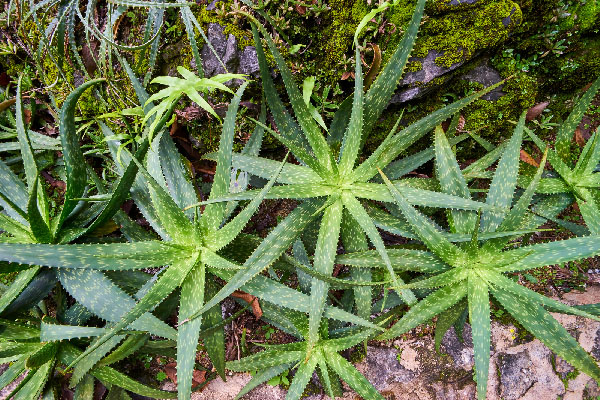Simple Tips for Planting & Growing Agave Plants
If you’re looking for a large glamorous plant to spice up your yard, that requires minimum effort to care for, look no further than Agave plants!
What Are Agave Plants?
Agave plants are really large succulents, with more than 250 species in the Agave genus. Larger species of Agave can grow up to 10FT tall, and sometimes even taller! Smaller species can be the size of a small bowl.
These succulents have long leaves with pointy tips. Agaves have a blue and greenish hue, and are covered in a powdery substance called “Epicuticular Wax”, “Farina”, or “Bloom”. This powder is completely normal for succulents. In fact, it acts as a built-in sunscreen for the plants! How cool is that? The thicker the layer is, the more sun-resistant your succulent is.

Simple Care Instructions for Agave Plants
1. Soil Mixture
Any well-draining soil is preferred for Agave. Sandy and rocky soil is great for these plants, airy and light soil allows moisture to dry fast but still provides the plant with hydration. Agave does NOT like to be sitting in wet, soggy soil. Leaving Agave in these conditions will lead to Root Rot!
2. Watering
Agaves are drought tolerant, especially mature plants. This means they don’t need to be watered frequently and can go a long time without a drop of water. Typically for weeks at a time, and sometimes over a month! Water the plants when you notice their leaves losing their plump look, slightly wrinkly.
3. Light Conditions
Providing Agave plants with as much sun as you can get will do them wonders. They love sunny areas. Depending on how mature your plant is, it may burn more easily. They can tolerate a little shade but prefer full sun. Rule of thumb is the hotter the climate is, the more shade they will tolerate.
4. Fertilizing
Now, we suggest holding off on fertilizing Agave… When fertilized, these plants are more susceptible to blooming, as fertilizers encourage blooms. Agave plants flower once in their lifetime, and once they flower the plant will die. It isn’t necessary to fertilize Agave, so unless you want a flowering plant with a short lifespan, don’t fertilize!
5. Propagation
Mature Agave plants produce “pups” or “baby plants” at the base of the plant. This is an inexpensive way of getting many of the same plant! Wait until the small pups are about a few inches wide before separating from the mother plant. Try and get as many roots intact with the plant as you can, then transport the pup in the same soil mixture in a small pot. Water only when the soil is bone dry. Now you have an adorable baby plant!
In Conclusion…
Planting Agave is a fun and great way to make your yard pop with color! The maintenance of these plants isn’t too difficult as they require little care to thrive, making them an easy addition to your garden.
That brings us to the end of this post, we hope you found this helpful. Hopefully from reading this, you can keep your agave plants beautiful and healthy! Don’t forget to stop by our shop for all things gardens! https://www.mollersgardencenter.com
Best of luck to you.